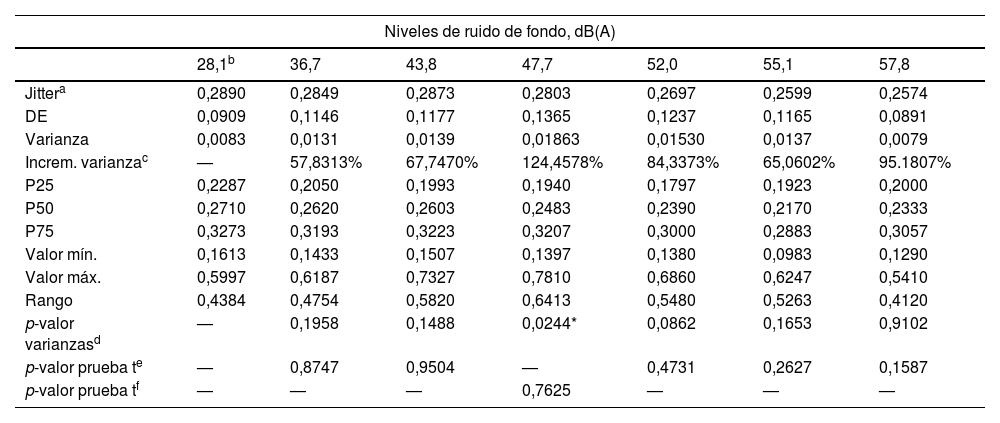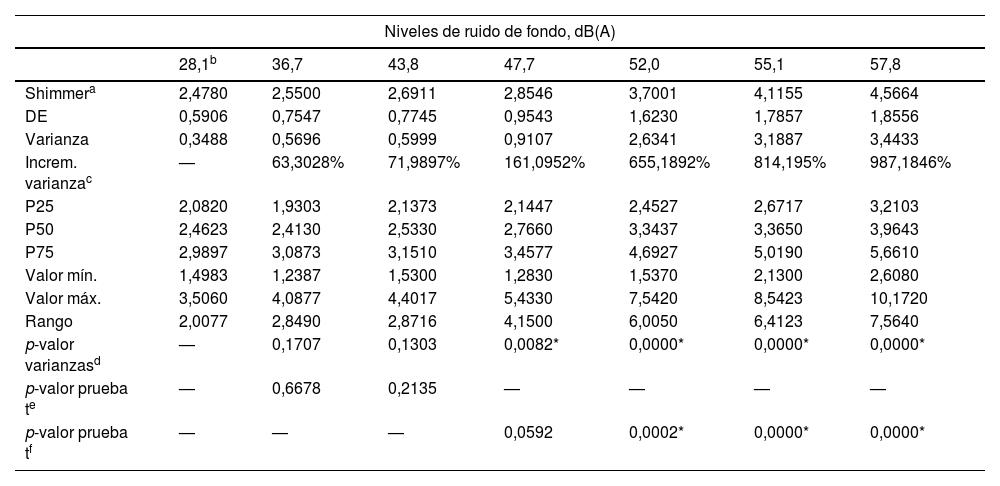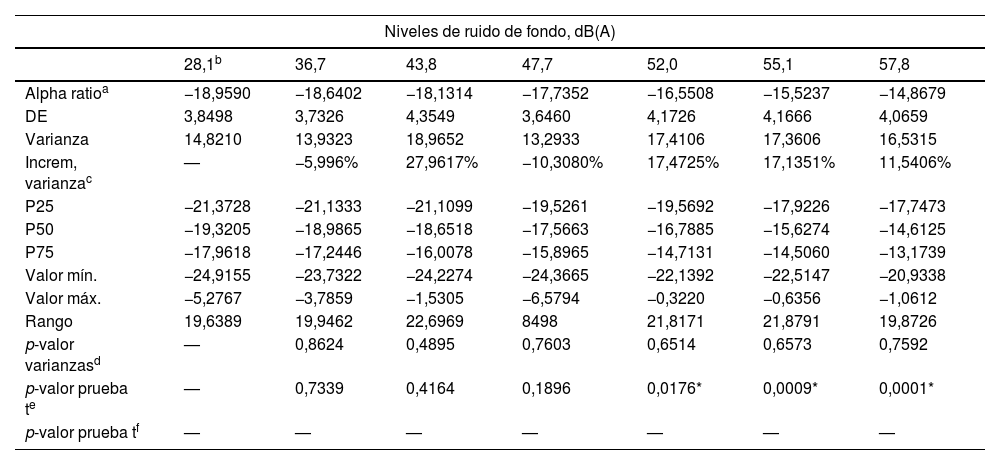Las investigaciones que involucran el análisis acústico no siempre consideran el nivel de ruido de fondo del recinto donde van a realizar el proceso de grabación o si lo hacen el valor máximo de ruido de fondo que utilizan varía de autor en autor. El objetivo de esta investigación es determinar si los parámetros: f0, Jitter, Shimmer y Alpha ratio varían en relación con los distintos niveles de ruido de fondo del recinto donde se realiza la grabación, y determinar un valor máximo de este.
Materiales y métodosSe utilizó el programa Praat® para obtener el valor promedio de los parámetros: f0, Jitter, Shimmer y Alpha ratio a partir de una muestra de voz en 33 sujetos al interior de una cabina Audiométrica cuyo nivel de ruido de fondo fue de 28,1dB(A). Se realizó una comparación estadística entre el valor promedio de cada parámetro al ir incrementando el nivel de ruido de fondo en relación con los valores promedio obtenidos con el nivel de ruido de fondo basal de la cabina para cada parámetro.
ResultadosLos parámetros f0 y Alpha ratio, muestran valores confiables hasta un nivel de ruido de fondo de 47,7dB(A), mientras que los parámetros Jitter y Shimmer lo hacen hasta un nivel de ruido de fondo de 43,8dB(A).
ConclusionesConsiderando que los parámetros acústicos se obtienen todos de la misma grabación, podemos señalar que el nivel de ruido de fondo máximo recomendable en el recinto donde se realicen las grabaciones debiese ser no superior a los 43,8dB(A).
Research involving acoustic analysis does not always consider the level of background noise in the room where the recording process is going to be carried out, or if they do, the maximum value of background noise used varies from author to author. The objective of this research is to establish if the parameters: f0, Jitter, Shimmer and Alpha ratio vary in relation to different levels of background noise in the room where the recording process is carried out and to establish a maximum value of this.
Materials and methodsThe Praat program was used to get the average value of the parameters: f0, Jitter, Shimmer and Alpha ratio from a voice sample of 33 subjects inside an audiometric booth whose background noise level was 28.1dB(A). A statistical comparison was made between the average value of each parameter as the background noise increased in relation to the average values obtained with the baseline background noise of the cabin for each parameter.
ResultsThe f0 and Alpha ratio parameters show reliable values up to a background noise level of 47.7dB(A), while the Jitter and Shimmer parameters do so up to a background noise level of 43.8dB(A).
ConclusionsConsidering that the acoustic parameters are all obtained from the same recording, we can point out that the recommended maximum background noise level in the room where the recordings are made should not exceed 43.8dB(A).









